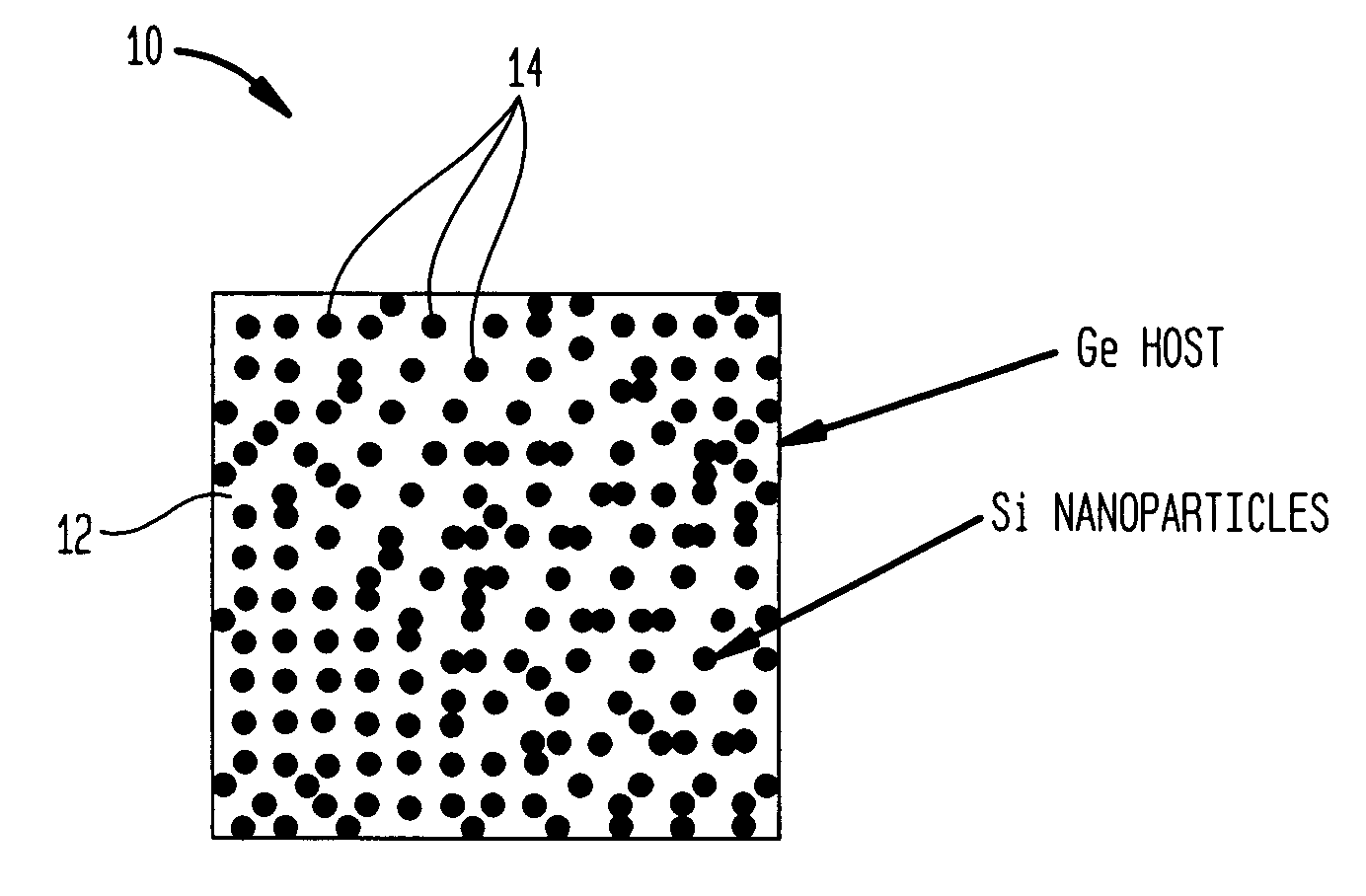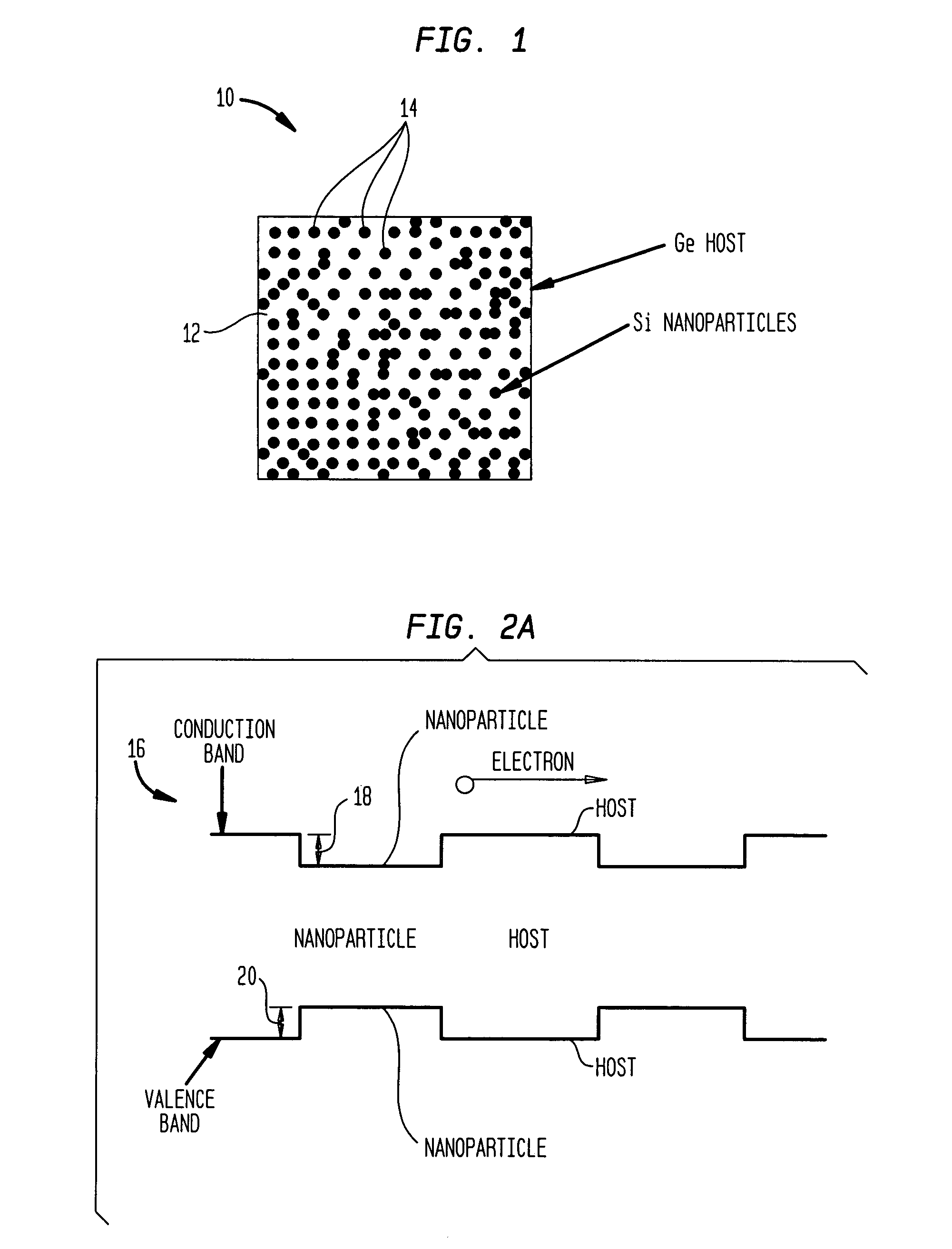Nanocomposites with high thermoelectric figures of merit
a technology of nanocomposites and thermoelectric figures, applied in the field of nanocomposites with high thermoelectric figures of merit, can solve the problems of low efficiency, low coefficient of performance (cop) (for refrigeration applications), and low efficiency of conventional thermoelectric materials with a small figure of merit, and achieve the effect of reducing the thermal conductivity of the composite and enhancing the thermoelectric properties
- Summary
- Abstract
- Description
- Claims
- Application Information
AI Technical Summary
Problems solved by technology
Method used
Image
Examples
embodiment 34
[0055]Although the segmented nanowires 28 in the above nanocomposite composition 26 are disposed relative to one another in a regular three-dimensional pattern, in another embodiment 34, shown schematically in FIG. 6C, the nanowires 28 are randomly located relative to one another.
[0056]FIG. 7A schematically illustrates a thermoelectric nanocomposite composition 36 according to another embodiment of the invention that is formed of a plurality of stacked nanowire structures 38, each of which is composed of two nanowires disposed substantially coaxially relative to one another. For example, as shown schematically in FIG. 7B, each nanowire structure 38 can include an outer shell 40 formed of a semiconductor material that surrounds an inner core 42, which is formed of another semiconductor material. The coaxial nanowire 38 can have a cross-sectional diameter D in a range of about 1 nm to about 1 micron, or in a range of about 1 nm to about 300 nm, and more preferably in a range of about ...
embodiment 44
[0059]Although in the above thermoelectric composition the nanowire structures include two layers—an inner core surrounded by an outer shell—in other embodiments, more than two layers, e.g., two coaxially disposed shells surrounding an inner core, can be employed. Further, although the coaxial nanowires 38 in the above composition 36 are disposed randomly relative to one another, in another embodiment 44, shown schematically in FIG. 8, the coaxial nanowires are arrange relative to one another according to a three-dimensional pattern.
[0060]A variety of techniques can be employed to fabricate thermoelectric nanocomposite compositions according to the teachings of the invention, such as those described above. In general, known techniques, such as, wet chemistry techniques and vapor-liquid-solid condensation, can be utilized to generate the nanostructures, e.g., nanoparticles or nanowires. These nanostructures are preferably incorporated within a host material, or intermixed with one an...
PUM
| Property | Measurement | Unit |
|---|---|---|
| sizes | aaaaa | aaaaa |
| sizes | aaaaa | aaaaa |
| sizes | aaaaa | aaaaa |
Abstract
Description
Claims
Application Information
 Login to View More
Login to View More - R&D
- Intellectual Property
- Life Sciences
- Materials
- Tech Scout
- Unparalleled Data Quality
- Higher Quality Content
- 60% Fewer Hallucinations
Browse by: Latest US Patents, China's latest patents, Technical Efficacy Thesaurus, Application Domain, Technology Topic, Popular Technical Reports.
© 2025 PatSnap. All rights reserved.Legal|Privacy policy|Modern Slavery Act Transparency Statement|Sitemap|About US| Contact US: help@patsnap.com



